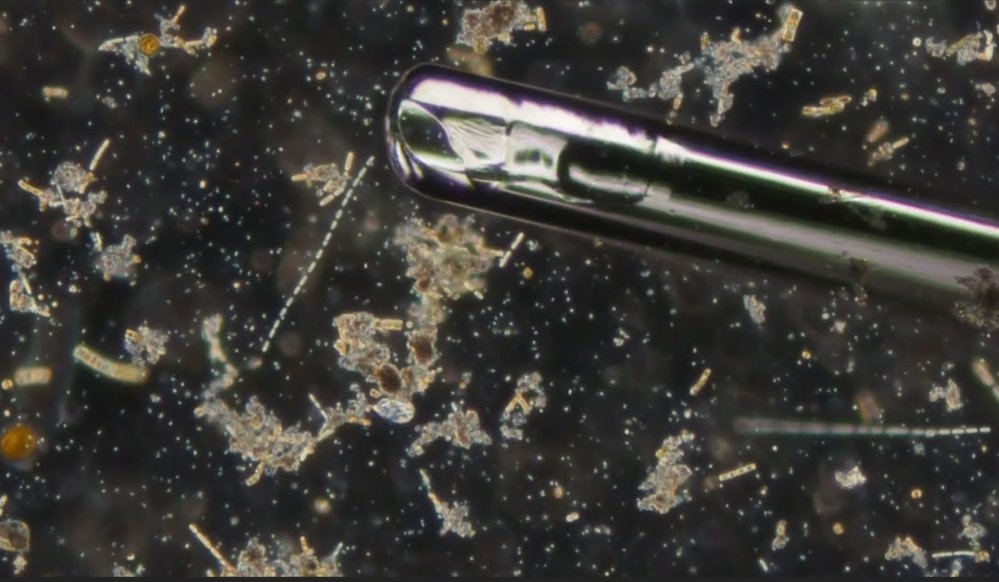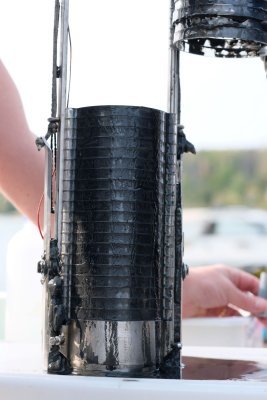It’s getting hot in here – how does phytoplankton adapt to rising temperatures?
Phytoplankton plays a key role in marine ecosystems while also producing half of the Earth’s oxygen. Climate change is a challenge to the phytoplankton floating in the water. A group of scientists is investigating the ability of phytoplankton to adapt to rising water temperatures across Europe.Published 2.5.2024
Text: Giannina Hattich
Image: Conny Sjöqvist
Editing: Viestintätoimisto Jokiranta Oy
Even though phytoplankton are rarely visible to the naked eye, they have a major influence on our lives. The phytoplankton floating and drifting in the water is the marine counterpart to the photosynthesizing plants growing on land. The phytoplankton produces half of the Earth’s oxygen, thus forming the basis for every other breath we take.
Phytoplankton are microscopically small, photosynthesizing, unicellular organisms growing in the light-filled layer of all bodies of water on Earth, from lakes and rivers to oceans. They form the basis for most marine ecosystems and play a decisive role in their productivity.

Capturing a glimpse into the microscopic world. The photo showcases the precision required to isolate a single cell under the microscope using a delicate glass pipette. Photo: Janni Heikkinen
Resting cells reveal the adaptation potential
Evolution is associated with very long periods of time. In phytoplankton species, however, short generation times and huge population sizes promote rapid adaptation. To put it into a human perspective, every drop of water contains as many phytoplankton cells as there are people living in Turku, and in many phytoplankton species, “new-borns” turn to “grandparents” in just three days. These properties enable phytoplankton to adapt quickly to changes in environmental conditions caused by humans, such as increasing sea surface temperatures. The source for this adaptation is genetic diversity.
The ability of species to adapt to an increase in sea surface temperatures can be altered by interactions with other organisms or environmental factors. Therefore, we can only gain a holistic understanding of the adaptation potential of an organism if we study it in nature, including all possible interactions. But how can we compare the ability of phytoplankton species to withstand increased temperatures before and after the onset of global change? The answer lies in phytoplankton resting cells.
Resting cells are like seeds of land plants. They can survive in marine sediments for decades and be used to grow new phytoplankton cells. These cells have the same genetic material and ability as their ancestors that lived long before humans started affecting the climate. The resting cells help us to understand how species have changed over time.

A muddy glimpse into the scientific exploration of anoxic sediment cores. The core is processed into 1 cm slices, revealing a chronological record of environmental changes over time. Photo: Giannina Hattich.
How does phytoplankton adapt in different environments?
Using phytoplankton resting cells, I conducted, together with colleagues from Åbo Akademi University, a study in the Archipelago Sea in Finland. We found that a phytoplankton species has adapted to rising temperatures since the 1960s. Our study shows that adaptation in nature is possible, but it takes longer than we had expected based on lab experiments.
Expanding on my previous study and its insights, I am now eager to investigate whether the same phytoplankton species have adapted to warmer temperatures also in the North Sea and the Mediterranean Sea. However, this is a significant effort that cannot be undertaken by a single scientist alone. Fortunately, it has become feasible as a side project within a broader community-wide study led by the European Molecular Biology Laboratory (EMBL) and the Tara Ocean Foundation.
Through this collaborative effort, I intend to compare thermal adaptation across European waters. The aim is to uncover general evolutionary patterns and gain a deeper understanding of the mechanisms driving the adaptation processes. The collective approach allows us to harness the expertise and resources of researchers with varying backgrounds, thus enabling us to tackle complex scientific questions that would otherwise be insurmountable.

Giannina Hattich defended her PhD at Geomar in Kiel, Germany, in 2018, and since 2020, Hattich has been working as a postdoctoral researcher in Turku. Her research is concerned with understanding how anthropogenic stressors affect single species, populations, and communities and are modulated by eco-evolutionary interactions to better predict future changes in marine ecosystem functioning.
Links:
https://www.nature.com/articles/s41558-024-01981-9
https://www.embl.org/about/info/trec/projects/
